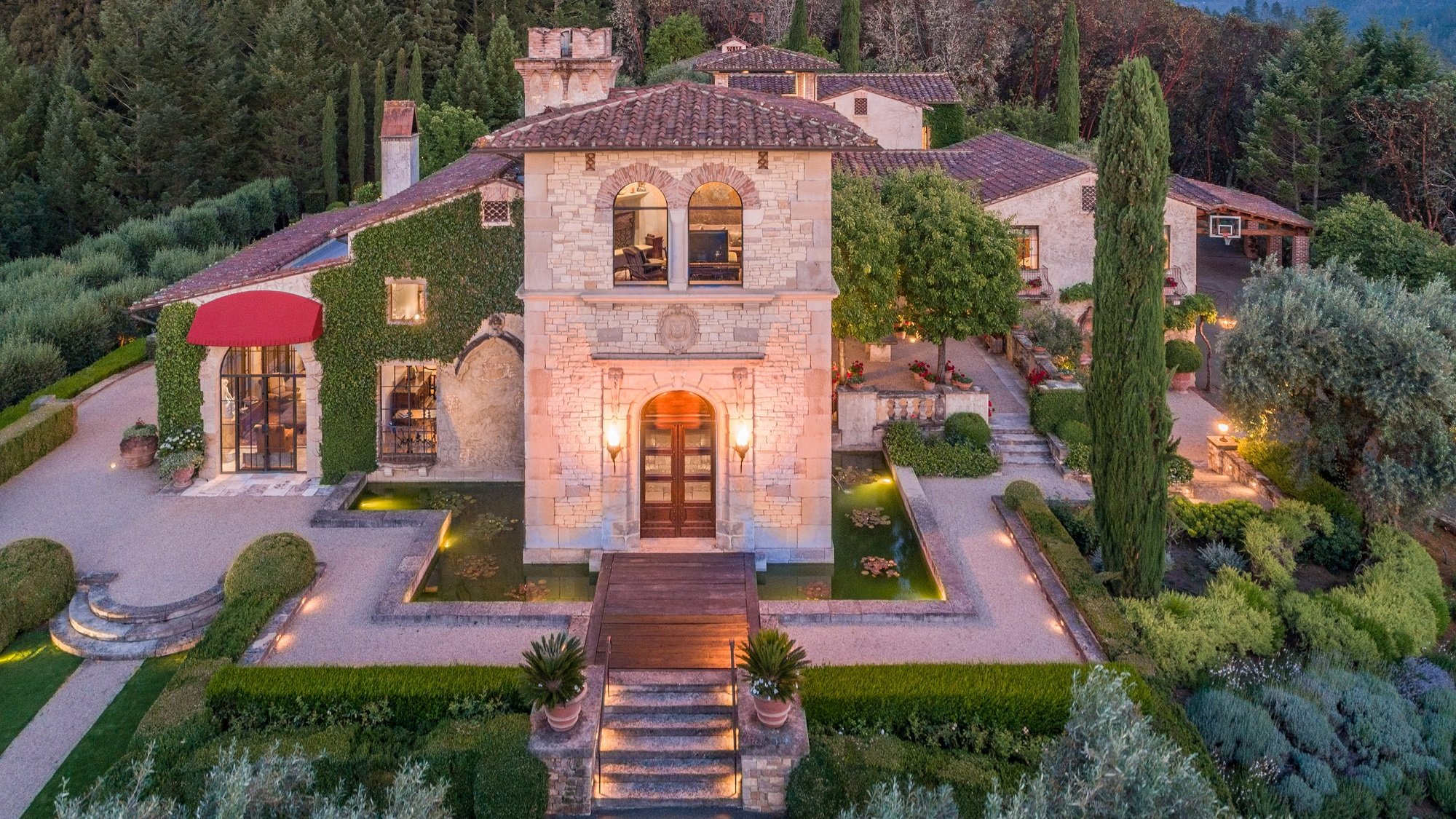#11215. Tuscan villa with stone facade and arched elements in Mediterranean style

The presented villa is an excellent example of Mediterranean architecture with Tuscan influences. The building's facade is made of light limestone, which gives the structure a majestic yet warm appearance. The central part of the facade is accentuated by a two-story symmetrical composition with arched elements.
The entrance area on the first floor deserves special attention, framed by an elegant arch with stone masonry, highlighted by wall sconces. Massive wooden doors with metal elements create a contrast with the sandy shade of the stone. On the second floor, the facade is adorned with a double arched construction with a column in the middle, forming a miniature portico that serves both as an architectural decoration and a functional element, allowing light into the interiors.
The side wing of the villa is partially covered with climbing plants, which softens the strictness of the stonework and organically integrates the structure into the surrounding landscape. A distinctive detail is the red fabric awning over one of the side entrances, which adds a bright accent to the overall color palette.
Particularly noteworthy is the masterfully executed zoning of the adjacent territory using terraces, retaining walls, and water elements framing the foundation of the building. Evening illumination of architectural elements and garden paths emphasizes the geometry of the space and creates a romantic atmosphere.
To adapt similar techniques in private construction, one can pay attention to the harmonious combination of natural materials, symmetrical composition of the facade with emphasis on the central axis, use of arched elements to soften strict lines, as well as thoughtful integration of the building into the landscape through terracing and vertical gardening.